If you happen to be a farm owner of more than a few escape artists, you may have heard many of the farmers use fencing.
However, if you are not quite sure what fencing is in agriculture and why you can benefit from it, you have come to the right place!
Do you know what is agricultural fencing?
Agricultural fencing is commonly used to keep livestock and cattle in or out of a particular area. As a farmer, you want only what’s best for your crops and your animals.
Therefore, keeping them safe from external dangers such as wild animals should be a priority!
However, there are a few notes you need to consider before you purchase electric fencing.
With various types and the purpose the fence will serve, the ultimate choice can be challenging.
Table of Contents
Plan Out the Fence
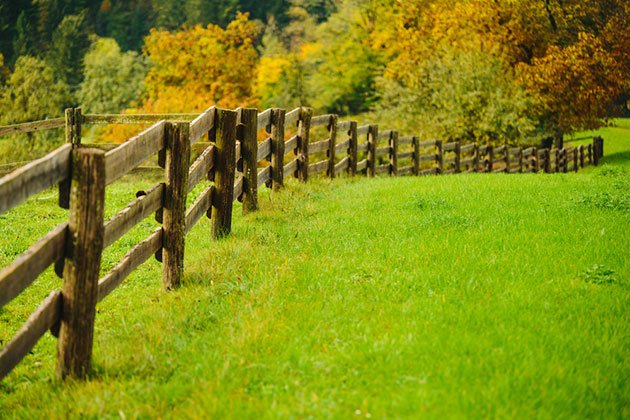
As with any installation, you will first have to plan out the fence line. You can do this best by getting a sketch of your farm and having an entire layout plan.
When you layout the fence plan, try avoiding rough terrain areas and spots in the field that are filled with weeds.
Check where the water line is, as many pastures allow for only one water source.
Next, decide between permanent fences and temporary ones.
Permanent fences are great for cropland and pastures with free livestock movement.
You will need to invest in permanent fences, as they will not be relocated, so there is no room for alterations.
On the other hand, temporary fences are easier to maintain, install, and move if needed. They are also less expensive, so consider your budget as well.
Read more —
Say Goodbye to High Electricity Bills With the Best Solar Fence Charger of 2022
Types of Fencing Materials
1. Wire Fences
Wire fence is commonly seen in agriculture. It’s supported by high tension, so it will not sag or get loose over time.
They are usually heavily strutted between the wooden posts in long intervals and stretch from 50-to 1000 feet.
Usually, wire fences are made from galvanized mild steel.
This material is excellent for wire fences, as it allows for tension and prevents wire tangling.
2. Wood Fences
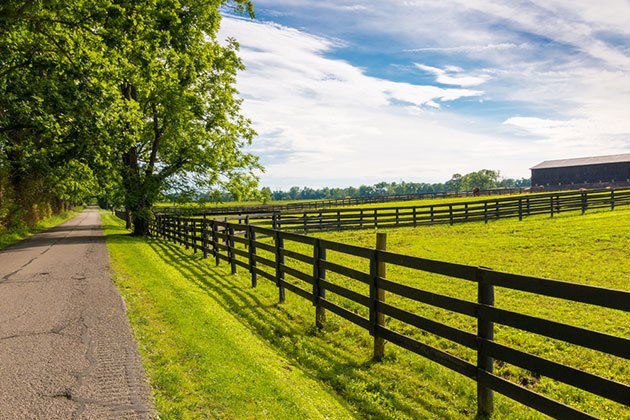
Next to wire fences, wood is the most popularly used material.
Not only is it a traditional option, but it’s also quite affordable, depending on the type of finish you select.
In addition, as many fear the longevity of wooden posts, you only need to search for the ones that have been covered with polyurethane.
It will improve the efficiency of the fence and repel insects, not to mention rust.
A wooden fence would be the best choice for horse fencing. It’s usually used in pens and corrals, and it can also be combined with electric fencing.
3. Pipe Fences
If you want a low-maintenance material, pick a pipe fence! They are relatively affordable yet sturdy for long-term use.
Plus, you can easily paint them over to match the rest of the farming equipment or cabin exterior.
Pipe fences are generally used for pens, corrals, and continuous fencing systems.
Types of Farm Fencing
1. Barbed Wire Fences
Let’s begin with barbed wire fencing, which was initially used to restrain livestock in the 19th century.
The innovation served the purpose quite well back in the time, as it was inexpensive and the first product on the market that could work as livestock fencing.
It’s known for its variety of styles.
Barbed wire fence wires include two to five firmly woven horizontal strands with spiky barbs. The strands of the barbed wire can be strung on wood posts or even metal posts.
They effectively taught the animals a lesson with their sharp barbs and were often used for docile animal containment.
However, the situation is quite different today.
Barbed wire is no longer safe to use for livestock and as horse fencing, as it can easily injure the animals that come in contact with it.
But, you can still use barbed wire with some animals, such as sheep or cattle, where a few strands of barbed wire would not hurt.
The most significant disadvantage of a barbed-wire fence line is that it can quickly be jumped over by animals or even loosened from permanent fence posts.
Additionally, you need to check your area regulations, as the barbed wire is not allowed in all areas.
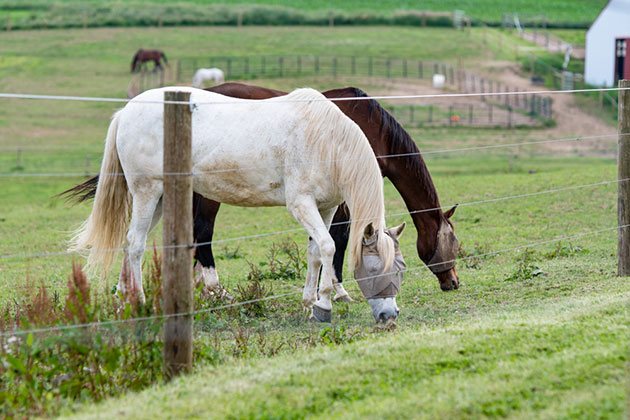
2. Welded Wire Fencing
Welded wire fencing is mainly used as chicken wire and for pens.
It comes in a recognizable design of strongly intersected metal wires spaced evenly to offer extra protection.
Usually, the grid squares measure two inches in width and four inches in height.
The fencing material used here is commonly steel which is excellent in restraining the animals from escaping.
The welded wire animal fence is made from 14-gauge or 16-gauge wire.
However, welded wire is best for small livestock. The animal fencing may not be suitable for bigger animals such as horses and cows.
In addition, the wires get easily bend if they come in contact with stronger force.
But, as it is excellent in confining small animals, it’s also great in keeping smaller predators away, such as foxes and coyotes.
3. Smooth Wire Fence
If you have the idea of a barbed wire but do not want to harm the animals along the way, then a smooth wire fence is the way to go!
The smooth wire fencing material is less likely to damage the animal’s fur or skin as it does not have barb spikes sticking out.
It’s designed from two-wire twist strands of metal.
The best thing about the smooth wire is that you can use them as an electric fence! They combine with an electric fence charger and keep the animals within property lines.
However, if you will be using smooth wire fencing without electric fencing, you should know it’s not sturdy.
Due to its elasticity, the fence can quickly lose shape, so it’s best to be used with electrical wiring.
Besides, if you don’t want to use electrified wire, you can always use smooth wire to reinforce fence post braces.
You can also use it on temporary fencing where one or two strands of smooth wire are combined with electric fencing woven into it.
4. Woven Wire Fence
Woven wire fences are one of the sturdiest agricultural fences.
It can be used as a deer fence and even on horse farms as the design is constructed from galvanized-coated woven wire.
Depending on the purpose, it comes in various styles and heights, and it’s easily installed on posts.
A woven wire fence has two interwoven layers of wires, one under the other. It is far more flexible than welded wire fencing and quite similar to a chain-link fence.
The vertical wires and spacing are dependent on the type of livestock animal being contained.
5. High-Tensile Wire
A high tensile wire will cost you, but the overall effect is worth paying for more!
The high-tensile wire fence is made from solid spring steel that holds tension under control. As a result, it’s much more durable than mesh wire and barbed wire fences.
Additionally, a high tensile fence can easily be stretched and spaced apart, but it does not compromise the flexibility of the fence.
Finally, these types of fencing are so expensive because of the load they can take.
A high-tensile wire can endure up to 1650 lb of animal pressure. Plus, it can be electrified and insulated for farm buildings.
6. Chain Link Fence
Lastly, we have the chain link fence.
As we mentioned previously, a chain link fence is similar to a woven wire as it has vertical wires twisted one across the other.
The diamond pattern usually comes in a 50 feet rolls with mesh wire fence gauges measuring 9, 11, and 11,5.
It’s one of the cheapest options for agriculture, and it’s commonly used to confine smaller animals such as poultry.
Choose Wisely: Best Fences for Animal Containment
The size and type of the fencing will mainly depend on the animal.
For instance, horses require tall and sturdy fences, whereas chickens and other poultry can use smaller fences.
But, there are other considerations as well.
For instance, can the animal dig their way out of the fence?
Goats and sheep are masters of escaping, as they usually crawl under the fence or even climb on it.
Here are a few types of fences you can consider based on the animals on your farm.
1. Hog Fencing
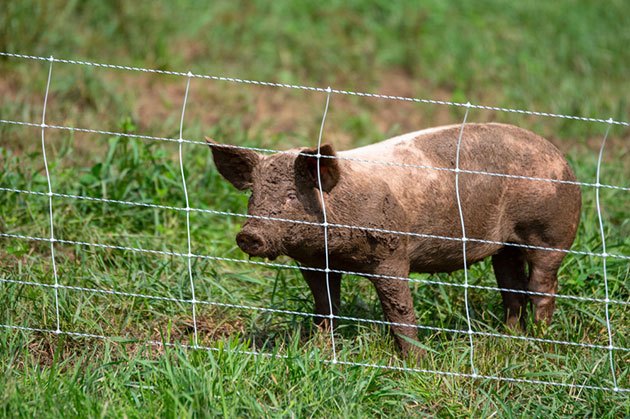
The choice always lands on the welded wire when it comes to the best type of hog fences.
It’s reliable and sturdy, constructed out of thick metal that keeps the hogs in their area.
In addition, the metal wire fencing material is welded and intersected, so it has less of a chance to break or bend.
Frequently, welded wire is combined with electric fences that can be used to keep the hog pens safe.
2. Horse Fencing
Horse fences need to be as sturdy as possible. Otherwise, the horses can roam freely as they can quickly jump over shorter fences.
In such a way, it’s necessary to pick a field fence made from poly wire or poly rope. It can further be combined with electrified wire for added safety.
Some farmers even use V-shape mesh wire fences to prevent the horses from getting caught up in the broken wires.
3. Deer Fence
A fence for deers and other wildlife animals needs to be taller than usual livestock.
The fence wire is commonly grid-designed that gradually gets wider towards the top. This unique design is to stop the smaller pests from entering the deer area.
The fence wire is built from thick and sturdy material such as metal and is either woven or knotted for extra support.
4. Rail Fencing
A rail fence is still used nowadays, and it resembles a wooden fence the most.
Rail fences are not known for being sturdy, so they serve ornamental purposes the most.
The design is also unique, as a rail fence is posted in horizontal rows and attached to the wooden posts.
Rail fences are often combined with wire fencing to keep the larger livestock from escaping to increase their effectiveness.
5. Chicken Wire
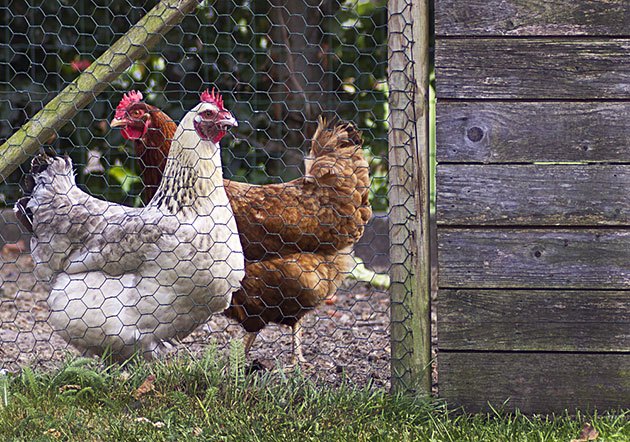
The chicken wire fence followed the already mentioned diamond pattern. The grid is relatively small, protecting the poultry from crossing the boundary area.
With chicken wires, a lightweight woven wire is used. It’s usually sold in two to five feet wide rolls and can cover a wide area.
Additionally, the chicken wire can also work well as a sheep fence and prevent other intruders from sneaking in.
Electric Fence 101: What You Should Consider?
As a part of agriculture fences, electric fencing has become a large part of keeping livestock safe in their area.
Therefore, the majority of farmers opt for electric fences nowadays.
Electric fences present not only a physical barrier but also a mental one.
With adequate training, your cattle and livestock will come up to the fence once, see how it works, and never even think about going near it again.
An electric fence that has been adequately designed can effectively restrain animals from your property.
Although electric fencing has not been the best choice for goats and sheep, it can be a terrific choice with proper use!
These types of fencing sent a pulsed electrical current along the fence wire from the energizer.
The pulses are sharp yet short, so they offer a warning to the animals that come into contact with them.
On the other hand, if pests and intruders often visit your livestock and crops, electric fences will do the trick in keeping them away.
Before you read our guides on the best electric fences, you should first know how they work.
1. Before You Install Electric Fence, Think About…
Escaping
If you plan on installing electric fencing, make sure you cover the entire area of the fence.
If you leave any part uncovered, animals will learn about it and develop escaping behavior. This is difficult to alter later on.
Imprinting
Are you installing an electric fence for young animals or older livestock? This is something that you should consider first.
When young animals are confined with an electric fence, they quickly learn how it works and takes it into adulthood.
However, it can be challenging to make them follow the rules with older animals.
2. How to Train Animals to Respect the Electric Fence?
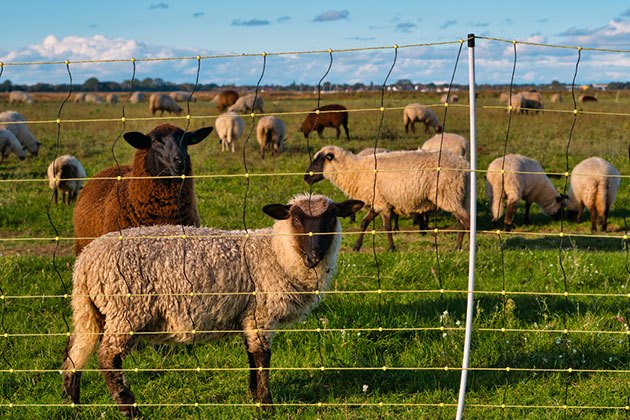
If this is your first time training the livestock in respecting the electric fencing, it’s always a good idea to start with a small pasture.
With that in mind, it’s best to use 3-4 electrified wire fences.
However, you need to remember that the goal is to create a mental barrier they should not cross. Cattle are easy to learn once they are mildly shocked.
Additionally, you can tie a red or any other brightly-colored ribbon on the fence to mark it from a distance.
You can also use electrified corrals during wintertime to teach the animals to stay away from the field fence.
3. What Should You Not Do With Electric Fencing?
There are a few dos and don’ts for electric fencing.
- You should not electrify the barbed wire or use barb wire on gates, for starters.
- Never leave the full tension of the wire during winter, as it will pull the brace out of the line.
- Always teach your livestock to respect the electrified fence. Never try to bring in new cattle that have not been trained. Otherwise, they will see it only as a physical barrier and try to run through it.
- It’s also not good to use copper wire to connect the ground rod due to the corrosion.
- Also, never wrap the ends of the fence line around the tree!
4. Equipment and Installation
Energizer
For starters, you will need a fencer or energizer.
When purchasing an energizer, make sure it’s a tad bigger than you need. In this way, you will be sure enough voltage runs through the wires.
Also, it can often deal with heavy weeds and wet grass, so for this reason, you want the bigger energizer.
Additionally, 2000 volts is enough for the summer, whereas winter months require at least 4000 volts due to the thick coat of the livestock.
Ground Rod
A grounding rod is one of the most important aspects of electric fencing.
First, it needs to be installed, approximately 6-8 foot long rods for every 3 meters. Then, both the rods and the clamps are connected back to the energizer.
After installing a fence, you have to make sure it’s adequately grounded. You need to ground the fence with a metal bar and a voltmeter to do this.
If the fence is grounded correctly, there should not be any volt reading on the meter.
Electric Fencing Supplies You Will Also Need
- A wire
- Insulators
- Corner posts and strainers
- Gates
- Braces
- Post and rail
- Tester
FAQ’s
What does fencing mean in farming?
In agriculture, fencing is used to confine and protect livestock and crop areas.
In addition, it’s commonly used to prevent animals from entering or leaving a specific area and protect the cattle from wild animals and other intruders.
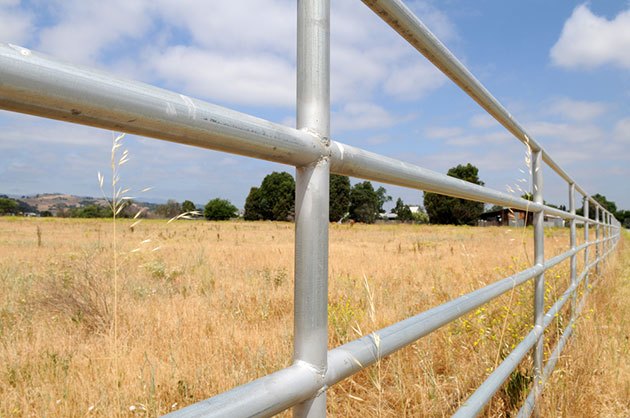
Which fencing is best for agricultural land?
The best fencing for agricultural lands is a woven wire fence. The woven design is made of wire knots wrapped around each intersecting wire.
Although it can be costly, it’s the most effective fence livestock owners use.
If a woven wire fence is combined with a barbed wire or even with electric fencing, it can be the best protection for pigs, sheep, goats, and other animals.
What are the uses of fencing?
One of the most beneficial uses of fencing in agriculture is to keep the livestock safe from going out or entering a forbidden area.
In addition, it keeps the wild animals away and helps with stock management.
With this in mind, animals physically cannot cross to another farm. Therefore, it’s beneficial in preventing stock breeding.
Moreover, if you also have a few crops, you will want to protect them from pests.
With fences, you can protect the waterways, shelterbelts, and plantations from rabbits and other tiny animals that may harm crops.
Which type of fencing is the cheapest?
The cheapest fencing option would be either a barbed wire or a PVC fence.
Barbed wire fences are a fantastic solution to cover a large pasture on a budget. It can also be placed on fence posts that are far apart, so you will be saving on extra material.
On the other hand, PVC or vinyl fence posts are easily cleaned and maintained. However, you have limited options as you cannot use electric fencing with a vinyl fence.
How much does it cost to put a fence around 1 acre?
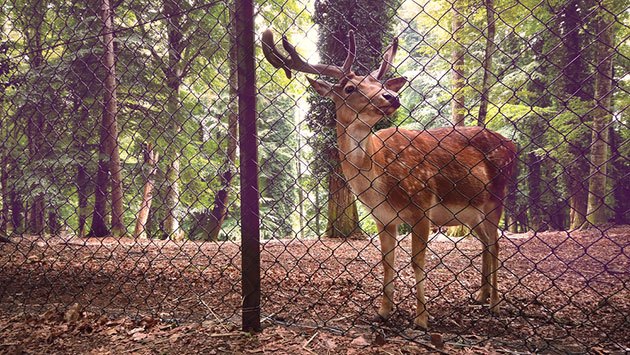
The fencing price will depend on the type of fencing materials you pick out.
Generally, barbed-wire fences cost around $1-$2.50 per linear foot. However, you will need to add manual labor, approximately $2.00 per linear foot.
With these calculations, barbed wire fencing will cost you around $3,762 for one acre of land.
However, if you know how to and wish to do the installations yourself, the total cost should not be over $2,000.
Final Words
In the daily life of a farmer, a proper fence plays a key role!
It keeps the animals confined in their area and does not allow intruders to walk in their territory easily.
If you live in the countryside, where your field is close to the neighbors, it’s not always possible to get a clear division line.
Luckily, agriculture fences are there to prevent the breeding of livestock and trespassing of wild animals on your farm.
To separate the breeding herds from non-breeding ones, agricultural fences are crucial for your farmhood.
To learn more about fences & their best types, check out what else we have in stock!
